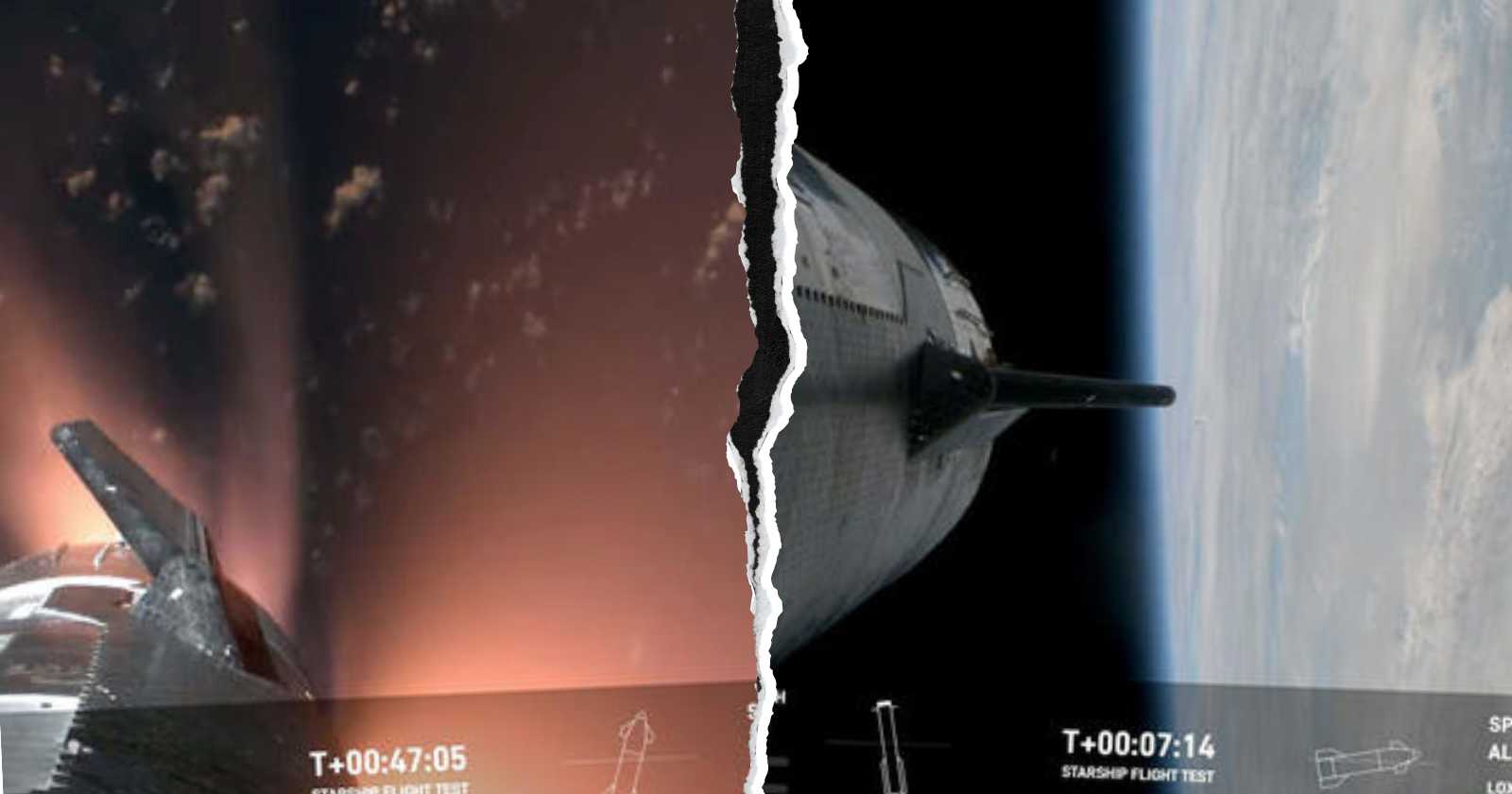SpaceX Launches Super Heavy-Starship Rocket, Stages Lost on Return: SpaceX’s enormous Super Heavy-Starship rocket, the most powerful ever built, successfully launched on its third test flight Thursday morning. While both stages broke up during their descents, officials praised the groundbreaking mission.
Stunning live video beamed back from a Starship camera displayed the increasing glow of re-entry heating as the spacecraft plunged back into the atmosphere. Eventually, the Starship was completely encased in a fiery blaze. Insulation tiles on its underbelly withstood temperatures exceeding 2,500 degrees. Telemetry stopped at about 40 miles altitude, suggesting the Starship broke apart before it could execute a rocket-powered descent to a planned splashdown in the Indian Ocean. Still, the company considered the successful launch and deep atmospheric re-entry a major achievement. “Today has been a phenomenal day,” a SpaceX announcer said.
Despite the spectacular ending, the Federal Aviation Administration (FAA) declared the event a “mishap” in a post on social media, adding that the agency “will oversee the SpaceX-led mishap investigation.”
The test flight commenced at 9:25 a.m. EDT. The rocket’s 33 Raptor engines roared to life, consuming a staggering 40,000 pounds of liquid oxygen and methane fuel per second. Billowing clouds of dust and steam formed as the booster’s fiery exhaust vaporized large amounts of water sprayed at the base of the launch pad to mitigate the shock of ignition.
The 397-foot-tall rocket climbed away flawlessly. It accelerated smoothly as it burned propellants and lost weight, then arced towards the east over the Gulf of Mexico, delighting residents and tourists who witnessed the spectacular display.
All 33 Raptor engines seemed to fire flawlessly, sending the rocket past the point of maximum aerodynamic stress as it pierced the speed of sound and exited the denser lower atmosphere.
Following a planned shutdown of the Raptor engines 2 minutes and 42 seconds after launch, the Starship upper stage’s six engines ignited in a recent change called “hot staging.” Moments later, the Super Heavy and Starship stages smoothly separated.
As the Starship continued its ascent into space, the Super Heavy booster flipped and began heading back toward the coast. Most of its descent proceeded smoothly, with engines firing as needed to slow down.
But as it neared the Gulf and passed through low cloud layers, the Super Heavy began swinging wildly, struggling to maintain its orientation. Camera images from the spacecraft were lost, and the booster plummeted into the Gulf without a planned engine firing called a landing burn.
The Starship, meanwhile, appeared to complete a perfect climb to space. Its engines shut down eight and a half minutes after launch, and breathtaking views of space and Earth’s edge were transmitted back while engineers conducted tests. Re-entry commenced about 40 minutes later.
Previous Test Flights Ended Poorly
Two earlier test flights resulted in dramatic explosions. The first, in April of last year, occurred after numerous Super Heavy engine shutdowns and a stage separation issue. The second, in November, happened just before the Starship could have started a planned orbit around the Earth.
Following the mishaps, SpaceX engineers adjusted several systems and initiated the “hot staging” technique in which the Starship’s six Raptor engines ignite while the stage is still attached to the Super Heavy booster.
Starship’s Third Test Flight Goals & Results
For its third test flight, the main objectives were essentially the same: boost the Starship into space for a sub-orbital test flight, perform a fast re-entry, and attempt a controlled landing by both stages (the Super Heavy in the Gulf of Mexico and the Starship in the Indian Ocean).
SpaceX designed both stages to be fully reusable, but no recovery plans were in place for the third test flight. The flight plan called for both stages to try rocket-powered landings, emulating actual procedures. As it turned out, neither stage made it that far. But it was close.
While in a coasting period, flight controllers tested a payload door that will be used for future Starlink satellite launches. Additionally, the spacecraft successfully transferred cryogenic fuel from one tank to another in space and performed the first restart of a Raptor engine outside the atmosphere. These accomplishments are pivotal for NASA, which is funding SpaceX’s development of a Starship variant to serve as its lunar lander.
More About Starship
The reusable Super Heavy-Starship system, or “Starship,” is a potentially revolutionary leap in spaceflight technology, designed to dramatically increase the amount of payload that can be sent into orbit while massively reducing costs. If successful, it will be a game-changer.
